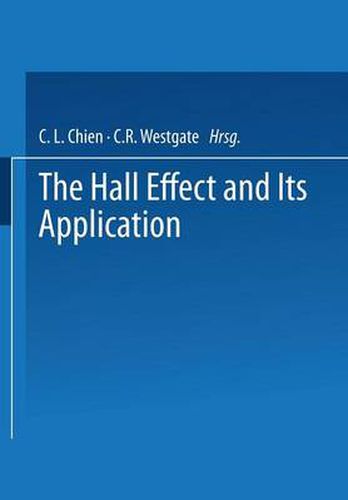Readings Newsletter
Become a Readings Member to make your shopping experience even easier.
Sign in or sign up for free!
You’re not far away from qualifying for FREE standard shipping within Australia
You’ve qualified for FREE standard shipping within Australia
The cart is loading…






This title is printed to order. This book may have been self-published. If so, we cannot guarantee the quality of the content. In the main most books will have gone through the editing process however some may not. We therefore suggest that you be aware of this before ordering this book. If in doubt check either the author or publisher’s details as we are unable to accept any returns unless they are faulty. Please contact us if you have any questions.
In 1879, while a graduate student under Henry Rowland at the Physics Department of The Johns Hopkins University, Edwin Herbert Hall discovered what is now universally known as the Hall effect. A symposium was held at The Johns Hopkins University on November 13, 1979 to commemorate the lOOth anniversary of the discovery. Over 170 participants attended the symposium which included eleven in vited lectures and three speeches during the luncheon. During the past one hundred years, we have witnessed ever ex panding activities in the field of the Hall effect. The Hall effect is now an indispensable tool in the studies of many branches of condensed matter physics, especially in metals, semiconductors, and magnetic solids. Various components (over 200 million!) that utilize the Hall effect have been successfully incorporated into such devices as keyboards, automobile ignitions, gaussmeters, and satellites. This volume attempts to capture the important aspects of the Hall effect and its applications. It includes the papers presented at the symposium and eleven other invited papers. Detailed coverage of the Hall effect in amorphous and crystalline metals and alloys, in magnetic materials, in liquid metals, and in semiconductors is provided. Applications of the Hall effect in space technology and in studies of the aurora enrich the discussions of the Hall effect’s utility in sensors and switches. The design and packaging of Hall elements in integrated circuit forms are illustrated.
$9.00 standard shipping within Australia
FREE standard shipping within Australia for orders over $100.00
Express & International shipping calculated at checkout
This title is printed to order. This book may have been self-published. If so, we cannot guarantee the quality of the content. In the main most books will have gone through the editing process however some may not. We therefore suggest that you be aware of this before ordering this book. If in doubt check either the author or publisher’s details as we are unable to accept any returns unless they are faulty. Please contact us if you have any questions.
In 1879, while a graduate student under Henry Rowland at the Physics Department of The Johns Hopkins University, Edwin Herbert Hall discovered what is now universally known as the Hall effect. A symposium was held at The Johns Hopkins University on November 13, 1979 to commemorate the lOOth anniversary of the discovery. Over 170 participants attended the symposium which included eleven in vited lectures and three speeches during the luncheon. During the past one hundred years, we have witnessed ever ex panding activities in the field of the Hall effect. The Hall effect is now an indispensable tool in the studies of many branches of condensed matter physics, especially in metals, semiconductors, and magnetic solids. Various components (over 200 million!) that utilize the Hall effect have been successfully incorporated into such devices as keyboards, automobile ignitions, gaussmeters, and satellites. This volume attempts to capture the important aspects of the Hall effect and its applications. It includes the papers presented at the symposium and eleven other invited papers. Detailed coverage of the Hall effect in amorphous and crystalline metals and alloys, in magnetic materials, in liquid metals, and in semiconductors is provided. Applications of the Hall effect in space technology and in studies of the aurora enrich the discussions of the Hall effect’s utility in sensors and switches. The design and packaging of Hall elements in integrated circuit forms are illustrated.